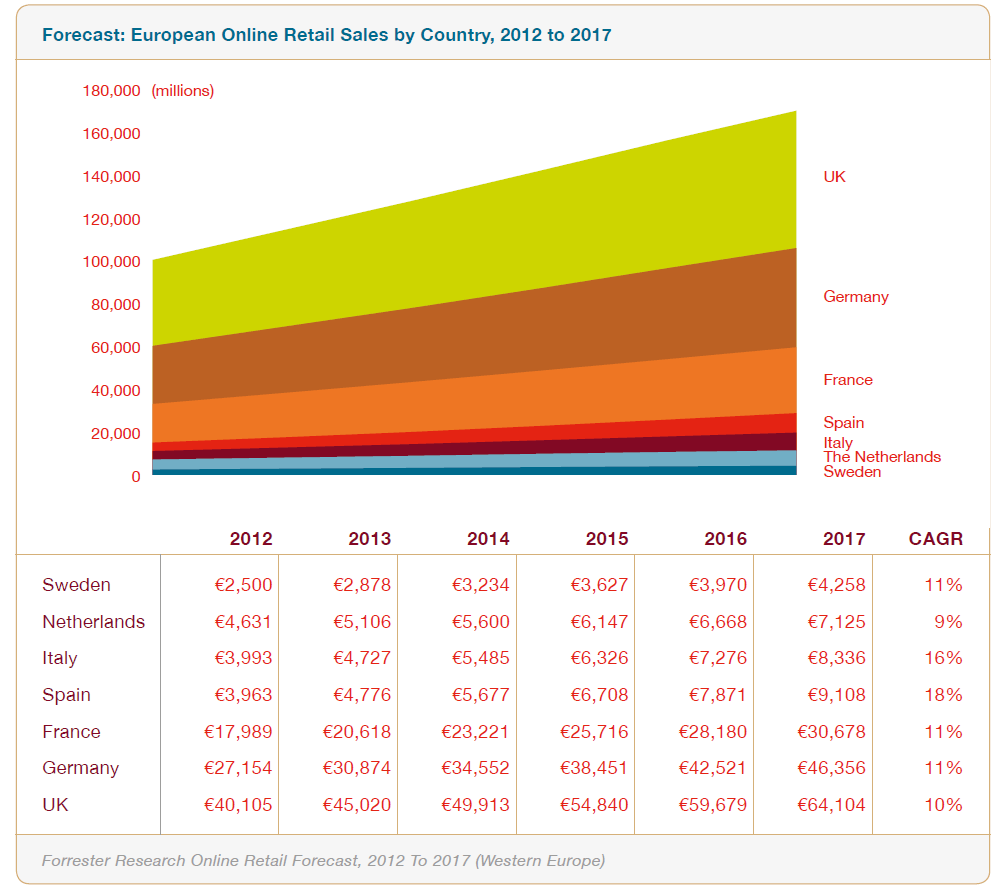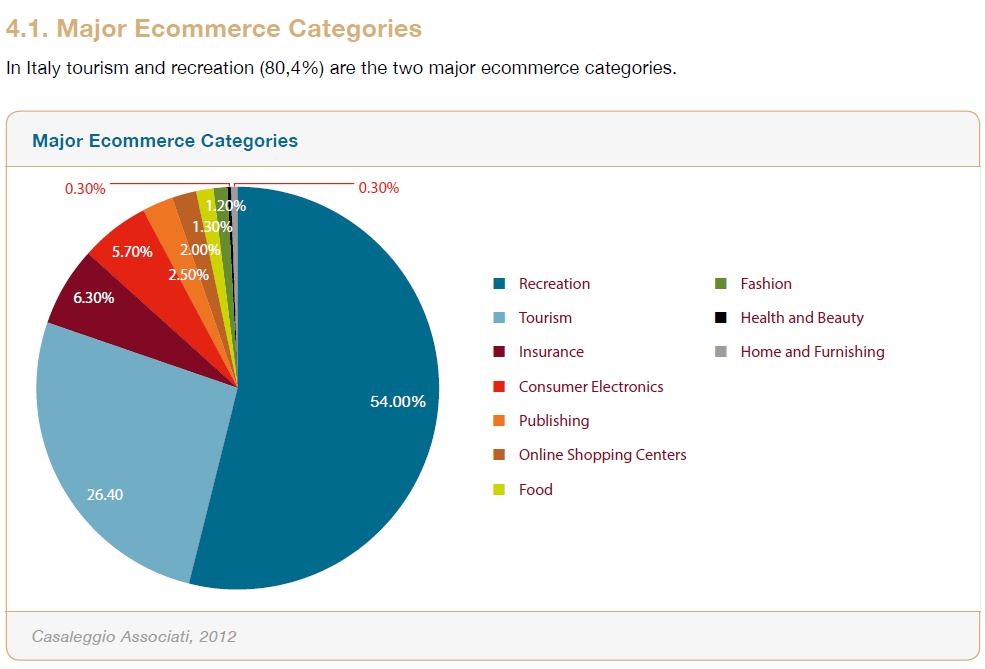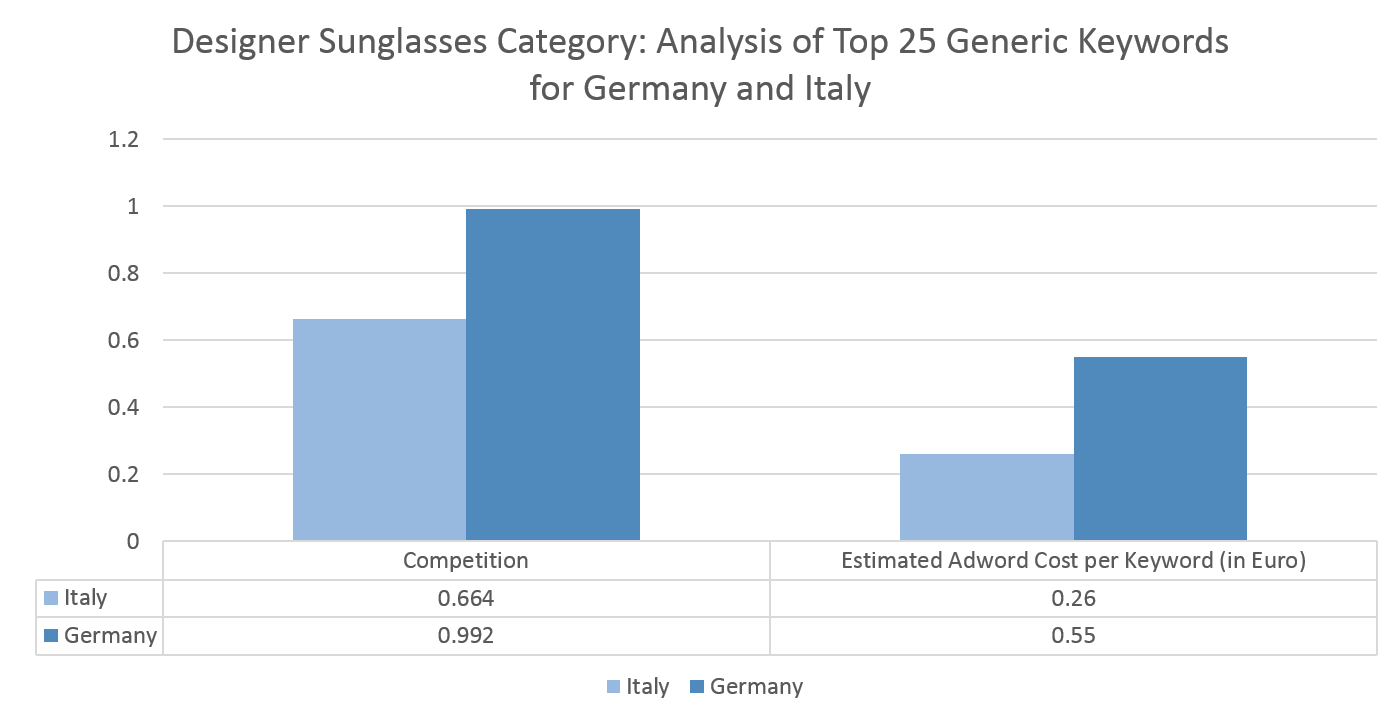When you work within the search intelligence sector and conduct daily industry analyses, you can’t help but to spot patterns. For me, one of those interesting observations is how retailers, rather than brands, predominantly occupy the top SERPs. Considering the nature of e-commerce and the required elements for successful SEO, that shouldn’t come as much of a surprise. What does come as a surprise is discovering a European market that is an exception to the general rule – where brands are more dominant than retailers. Where is that market? Italy.
6 Out of 10 Top Players in Italy’s Designer Sunglasses Category Are Brands
The initial goal of digging into the designer sunglasses category in European markets was to outline the top-performing players and try to determine their search strategies. Based on my previous experience, observing industries/categories related to tangible goods such as jewelry, clothing, and so on, I expected to see a number of retailers filling up the “top” space. That is where I was surprised. It turns out Oakley, Gucci, Armani, Ray-Ban, Persol, and Carerra were all among the top performing search players in Italy’s designer sunglasses category. Moreover, note that four out of those six brands owe their rankings solely to organic search. So, how did they pull that off?
 Screenshot taken 6/02/2014 of http://ii.hoosh.com
Screenshot taken 6/02/2014 of http://ii.hoosh.comTo compare, take a look at the chart with top 10 ranking domains within the same industry and category for the German market. How many brands can you count? Additionally, can you spot any of them that didn’t invest in Adwords?
 Screenshot taken 6/02/2014 of http://ii.hoosh.com
Screenshot taken 6/02/2014 of http://ii.hoosh.comIs this an exception to the rule, or a clue that could potentially lead us to make some important observations regarding a major European market? Maybe even change our own strategies? Let’s dig further.
In Search of Answers
While trying to figure how brands are taking over the top spots in search for Italy’s designer sunglasses category, I outlined the following questions:
1. Does Brand Origin Matter?
The fact that Gucci, Armani, and Persol started in Italy and Carrera’s current headquarters is located there definitely has an impact on the brands’ reputation among local customers. It opens space for building trust and loyalty. But is brand origin really a factor when it comes to good search rankings? As you can see above, the brand with the highest position – Oakley – is actually American. So is Ray-Ban, which also ranks among the top 10.
After all, Italy is the capital of fashion. So, naturally a solid amount of the most successful brands in clothing, accessories, jewelry, etc. were initially established in that country.
Obviously, brand origin wasn’t the answer to my overall investigation.
2. How Mature is the Italian Online Market?
Gianpietro Mazzoleni and Sergio Splendore’s paper “Italian digital Media: transformation without change” from 2013, states:
“ Internet take-up at home is plagued by the slow growth of broadband, which lags behind most of the EU countries, and by access divides, particularly between regions in the north and south and between rural and urban areas. Nonetheless, the percentage of regular internet users now [2012] represents more than half of the population. Almost 90 percent of regular users are aged 14-29.”
In my attempt to evaluate the Italian online market’s maturity in more detail, I drew a comparison between Italy and Germany and analyzed major factors like connectivity, broadband adoption, cost of Google Adwords per inhabitant, and keyword analysis.
-
Connectivity
Based on statistics by the European Commission, we can spot a substantial growth between 2012 and 2013, however, compared to Germany’s impressive 85 percent of all households having access to the Internet, the Italians still have a lot of room for improvement.
 Image credit: Hoosh.com
Image credit: Hoosh.comThe difference between Germans and Italians, who have never used the Internet is also fairly significant:
 Image credit: Hoosh.com
Image credit: Hoosh.com-
Speed
Another important factor when evaluating an online market’s maturity is the average speed of connection. As reported in Akamai State of the Internet report, we can see quite a substantial difference between Italy and Germany. The average connection speed in Italy is 4.9 Mbps, compared to Germany – 7.6 Mbps.
-
Retailers and the Italian online market
As outlined in the Cross-Border E-commerce Country Report – Italy, conducted by Ecommerce Europe, there were about 13 million online shoppers in 2012 and a 15 percent e-commerce penetration. To compare, 51.6 million German internet users have purchased goods and/or services online, resulting in a total of 77 percent e-commerce penetration. Italian online retail sales are expected to mark a significant growth for the upcoming three years, however, Germany’s estimated income is still predicted to be six times higher.
 Image credit: http://www.thepaypers.com/cross-border-ecommerce/cross-border-ecommerce-report-Italy/9
Image credit: http://www.thepaypers.com/cross-border-ecommerce/cross-border-ecommerce-report-Italy/9As for the major e-commerce categories in Italy for sectors like fashion health and beauty, customers haven’t really got used to shopping online yet:
 Image credit: http://www.thepaypers.com/cross-border-ecommerce/cross-border-ecommerce-report-Italy/9
Image credit: http://www.thepaypers.com/cross-border-ecommerce/cross-border-ecommerce-report-Italy/93. How High is the Competition for the Top Keywords?
Using the set of top 25 generic keywords that we track for a given industry and category, I compared the average level of keyword competition between Italy and Germany (scored from 0 to 1, where 1=HIGH and 0.1=LOW). Additionally, using the Google Keyword Planner tool, I got the estimated cost for the same set of keywords and once again, compared the average results between the two markets. As it turns out, both the cost and the competition is lower in Italy.
 Image credit: Hoosh.com
Image credit: Hoosh.comBrands vs. Retailers in the Italian Market: Key Takeaways
- The Italian online market makes an exception to the general rule, by letting brands outnumber retailers in top positions of the SERPs.
- Comparing the Italian online market’s maturity with the German one, we can definitely spot some major differences, related to broadband speed and distribution, attractiveness for retailers, e-commerce trends, keyword competitiveness, and cost of Adwords.
- Nonetheless, the Italian online market shows steady growth in maturity, pointing that it might simply be a matter of time, before retailers “take over” brands in search.
- In time, it would be interesting to follow-up, if brands will need to optimize their search strategies, in order to “keep in shape” and be among the top-players.
Last, but definitely not least, analyzing an online’s market maturity can help marketers understand better why some markets are more attractive to retailers than others. Moreover, equipped with this kind of intelligence, they could optimize their own brand’s search campaigns, based on the level of competitiveness and attractiveness of the market.
Featured Image credit: Google.com screenshot Feb 2014


